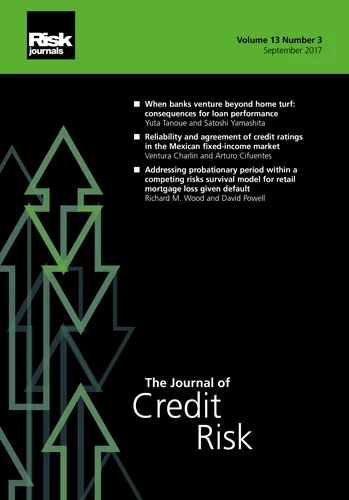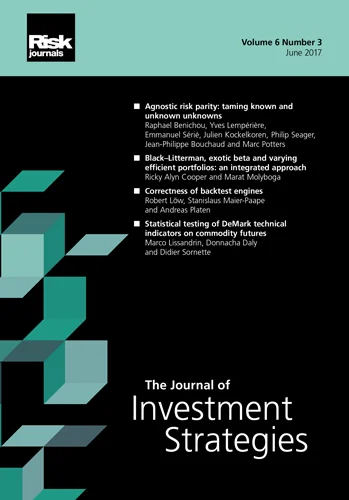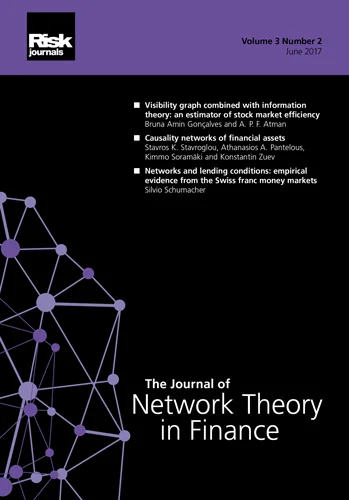Journal of Operational Risk
ISSN:
1755-2710 (online)
Editor-in-chief: Marcelo Cruz
Volume 5, Number 3 (September 2010)
Editor's Letter
Marcelo Cruz
Welcome to the Welcome to the third issue of the fifth volume of The Journal of Operational Risk. I am happy to see that our appeals for less technical articles with industry commentary and observations are actually taking effect. For the second issue in a row we are publishing a volume with more forum than research papers. While we will eventually go back to our traditional three research papers and one forum paper per issue, the Board was very keen to stimulate authors with non-quant backgrounds to publish their views on current industry issues. I think we have achieved this objective.
During the summer we have seen a number of important initiatives on the regulatory side. In the US the Dodd–Frank bill was finally signed and, while the final version has been significantly smoothed out after months of debate and compromises, it still signals significant changes for the financial industry in the most important global market. Is this just a starting point for bigger changes that will take place in other markets? Maybe not, as it looks like governments are living under considerable pressure from many segments in society to put more controls around the financial market as a solution to avoiding crises like the current one. As an example, we have not even finished the implementation of Basel II and regulators are already discussing Basel III as a way of increasing the capital cushion in the financial sector. All that should keep risk managers very busy in the next three to five years.
Regarding the state of operational risk research, I would like to ask potential authors to continue to submit to the Journal. Again, I would like to emphasize that the Journal is not solely for academic authors. We at the Journal of Operational Risk would be happy to see more submissions containing practical, current views of relevant matters as well as papers focusing on the technical aspect of operational risk.
RESEARCH PAPER
In this issue, we include four papers: one research and three in the forum section. The research paper is an interesting application of real options to assess the risk that a vendor or counterparty takes in breaching a contract. In “Modeling breach of contract risk through bundled options”, Haksöz and ¸Sim¸sek design and value a bundled option that is composed of contract abandonment and subsequent price renegotiation. They use the example of breaches in a supply chain but this can also be applicable to a financial contract if you imagine the financial settlement process of a transaction of a supply chain. The suggestion of a bundled option in the contract negotiation mitigates the breach of contract risk.
FORUM PAPERS
In the first paper of the forum section, “Observations on the new US financial regulation challenges to the financial sector: data standardization, straight-throughprocessing and operational risks”, Grody comments on the challenges that the new Dodd–Frank bill faces in the US. He tackles the issue of the lack of standard global identifiers for financial instruments, financial contracts, counterparties and supply chain participants for transaction matching and position aggregation; and the costly and inefficient duplicative reference data used to clear, settle and value positions. Given these hurdles, Grody assesses the challenges to financial institutions that they will need to face in order to be compliant to the new regulatory environment.
In the second paper in the forum section, “Sanctions screening: the quest for efficiency and effectiveness”, Evans describes the “catch 22” situation faced by financial institutions when it comes to filtering payments against sanctioned entities as these entities are averting prevention methods through increasingly more sophisticated approaches. In this short paper, Evans explores how banks can best address these challenges by increasing both the efficiency and effectiveness of their screening methods.
In the third and final paper in the forum section, “A review of the key issues in operational risk capital modeling”, Chaudhury summarizes for us some of the key issues faced by firms in modeling operational risk capital.
Papers in this issue
A review of the key issues in operational risk capital modeling
Observations on the new US financial regulation challenges to the financial sector: data standardization, straight-through-processing and operational risks
Sanctions screening - the quest for efficiency and effectiveness
Modeling breach of contract risk through bundled options








